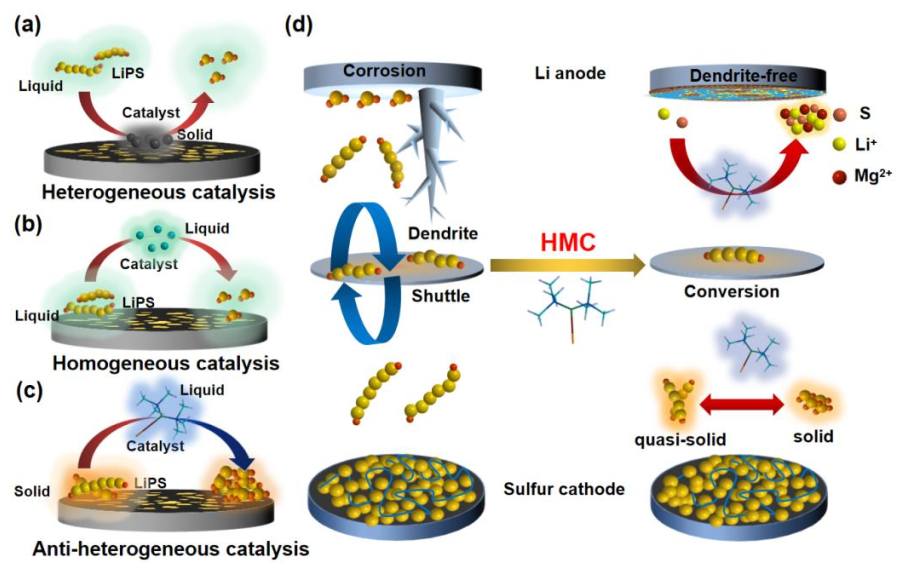
Recently, Professor Xiao’s group in Henan Key Laboratory of Photovoltaic Materials made important progress in high-performance lithium-sulfur (Li-S) batteries. And this study entitled “Anti-Heterogeneous catalysis revealed by the amidomagnesium halide chemistry in lithium sulfur batteries” was published in Journal of Catalysis (belonging to the Top Journal list of Henan University).
Li-S batteries have been widely investigated as one of the new secondary batteries owing to the high theoretical specific capacity and energy densities. However, the practical application of Li-S batteries is retarded by the notorious shuttle effect of long-chain LiPS and the uncontrolled Li dendrite growth, which result in the low sulfur utilization and a short lifespan of Li-S batteries. In recent few years, catalysis has been introduced into Li-S batteries, which is generally classified into heterogeneous and homogeneous catalysis to realize the accelerated conversion of soluble polysulfides. But the issues faced by Li anode are still hard to be addressed with these modification methods. Herein, the group proposed a new concept of “anti-heterogeneous catalysis” strategy to synchronously realize effective polysulfides trapping/conversion and the protection of the Li metal anodes via incorporating Grignard reagent derivant electrolyte additive (HMDSMgCl). With combined theoretical simulations and in-situ spectroscopic analysis, it is certified that the Li+ dissociation barriers for these LiPS species are remarkably increased and the Li+solvent activity in common DOL/DME electrolytes is dramatically suppressed, leading to the reduced solubility of long-chain polysulfides and the occurrence of a quasi-solid-state conversion mechanism. Meanwhile, the Mg2+ in non-nucleophilic reagent HMDSMgCl reversibly participates in the Li plating/stripping process, which is conducive to form a stable and uniform SEI layer on the lithium anode, then restrains the electrolyte depletion and the lithium dendrite formation. As a result, the presence of only 0.25 vol% liquid catalyst enables Li/Li symmetric cells to realize decent cycling stability over 1000 h and electrolyte-starved pouch cells to deliver a high energy density of 423 Wh kg-1.
This work was financially supported by the National Natural Science Foundation of China, Scientific Research Foundation for “Special Support Program for Exceptional Talents” of Henan University, Key Scientific Research Projects of Higher Education in Henan Province, Natural Science Foundation of Henan Province, and Post-doctoral Foundation of Henan Province. The first author is postgraduate Chen Miao, and Prof. Xiao Zhubing is the corresponding author.
Article link https://doi.org/10.1016/j.jcat.2021.10.038